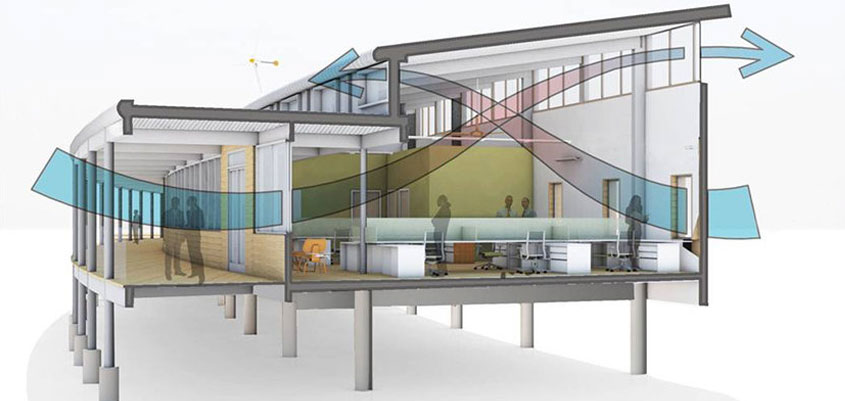
Ventilation systems in nearly zero energy buildings, what are they like?

superadmin
May 10, 2018
The Nearly Zero Energy Building (nZEB) is the present and future of the construction sector. This is because, as a result of a European Union regulation, all public buildings constructed from this year onwards must be nearly zero energy. From 2020, this will apply to all buildings. Among the most important guidelines for this type of construction are the ventilation systems in nearly zero energy buildings, necessary to meet European requirements.
Also known as nZEB for its English acronym (nearly Zero Energy Buildings), the nearly zero energy building must abandon traditional air conditioning systems, whether for generating heat in winter or cooling spaces in summer. This implies significant changes in how buildings are constructed, but also in how they must be ventilated.
In Spain, the Technical Building Code has been adapted to the ventilation needs of homes that must comply with these requirements through the basic HS3 health document. This way, the CTE explains that current buildings need to install ventilation systems to also meet indoor air quality needs. There must be a guaranteed intake of air from the outside and, above all, the necessary expulsion of stale air generated indoors.
New buildings considered in the Nearly Zero Energy Building must apply construction systems with airtightness and thermal insulation, thus achieving a reduction in energy demand. With much more airtight homes, the summer heat or winter cold does not easily penetrate.
On the other hand, in these new buildings, there is an increased need for ventilation, since, as air does not filter through walls, doors, and windows, it is necessary to ensure a flow from the outside. Additionally, in ventilation in Nearly Zero Energy Buildings, other needs are specified:
- The quality of indoor air must be maintained, and as previously mentioned, stale air must be eliminated.
- The air introduced by the ventilation systems must be cleaned through air filters that eliminate polluting particles that may come from the outside.
- Humidity indoors must be regulated to avoid health issues for the inhabitants and also damage to the building.
- Above all, the maximum degree of energy efficiency must be achieved, ensuring a high level of comfort for residents while saving the maximum amount of energy.
Double flow, the ideal option for ventilation in nearly zero energy buildings

Due to the needs of ventilation in Nearly Zero Energy Buildings, traditional air conditioning systems cannot be chosen. Since it is necessary for buildings to consume very little energy, they cannot rely on high consumption solutions.
That is why the Nearly Zero Energy Building is characterized by all processes being focused on energy efficiency. The airtightness of the buildings and their orientation make climatic changes affect the interiors much less.
To guarantee proper ventilation and also provide maximum comfort, double flow ventilation systems are the best option. In this case, the extraction of stale air and the introduction of filtered fresh air from the outside are mechanically and separately performed.
In the summer, the air exchange - along with the building's airtightness - means we do not need air conditioning units and can enjoy pleasant indoor temperatures without opening the windows. Since with mechanical ventilation systems, the windows should generally remain closed and the airflow never stops.
The cost of these systems is minimal, often comparable to that of a light bulb. In winter, when the need for cooling is greater, double flow ventilation incorporates a heat recovery unit that can send warm air from the outside even in very cold temperatures. This system, known as aerothermics, is used in passive houses, which are those that do not consume anything except for the ventilation system.
It is also possible to use single flow systems in the Nearly Zero Energy Building, although the results are not the same. In this case, the extraction of air is done mechanically. Likewise, climatic conditions indoors are also controlled to regulate the flow and extraction.

Siber Ventilation
Related posts

Why is mechanical ventilation necessary in homes?

